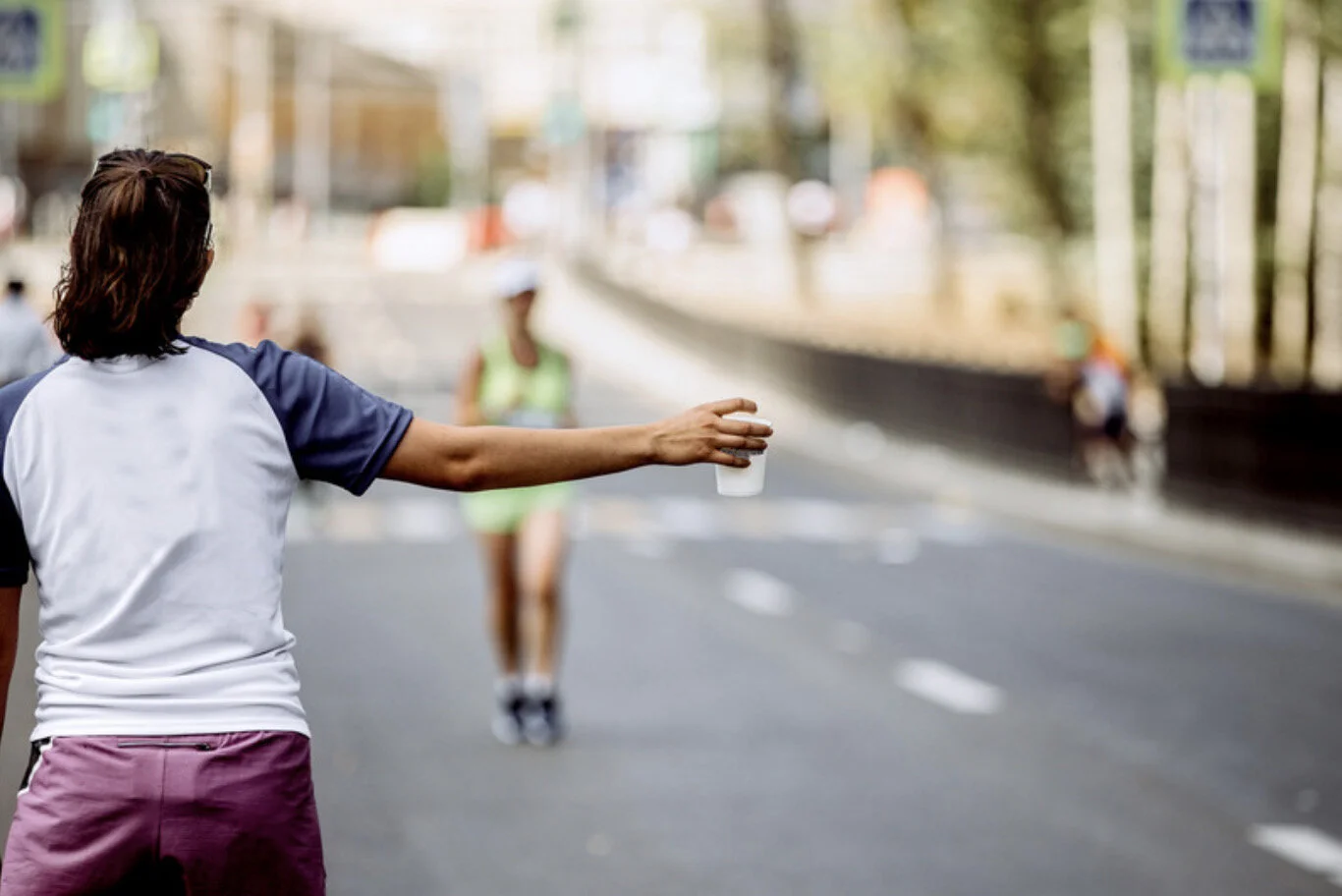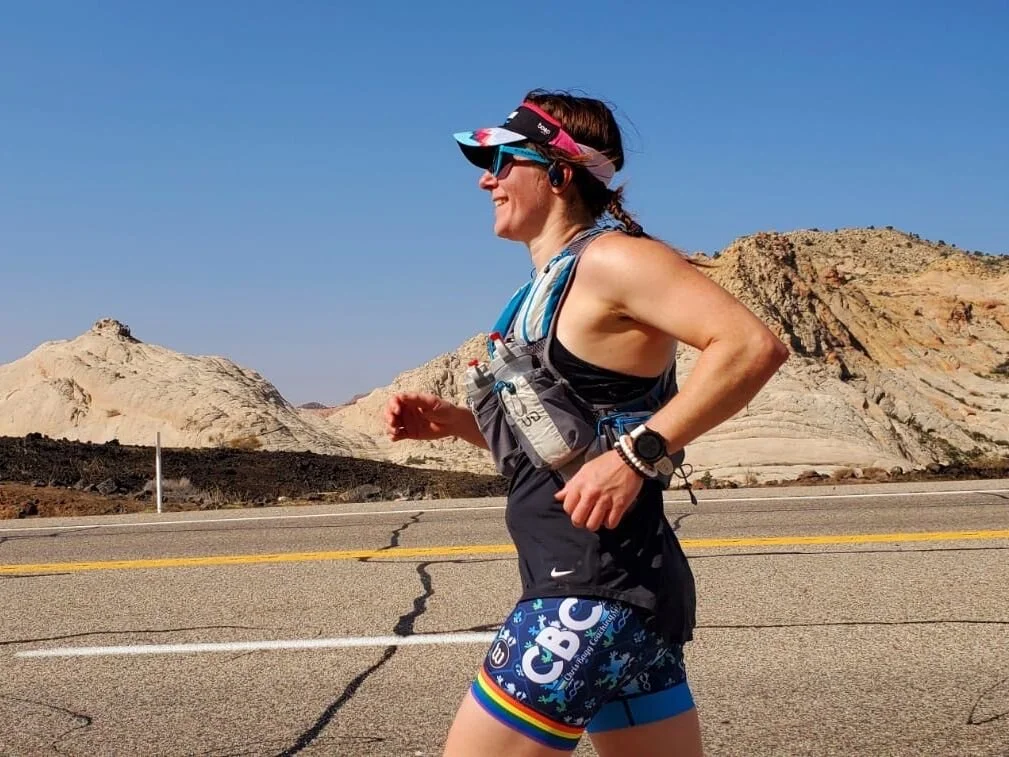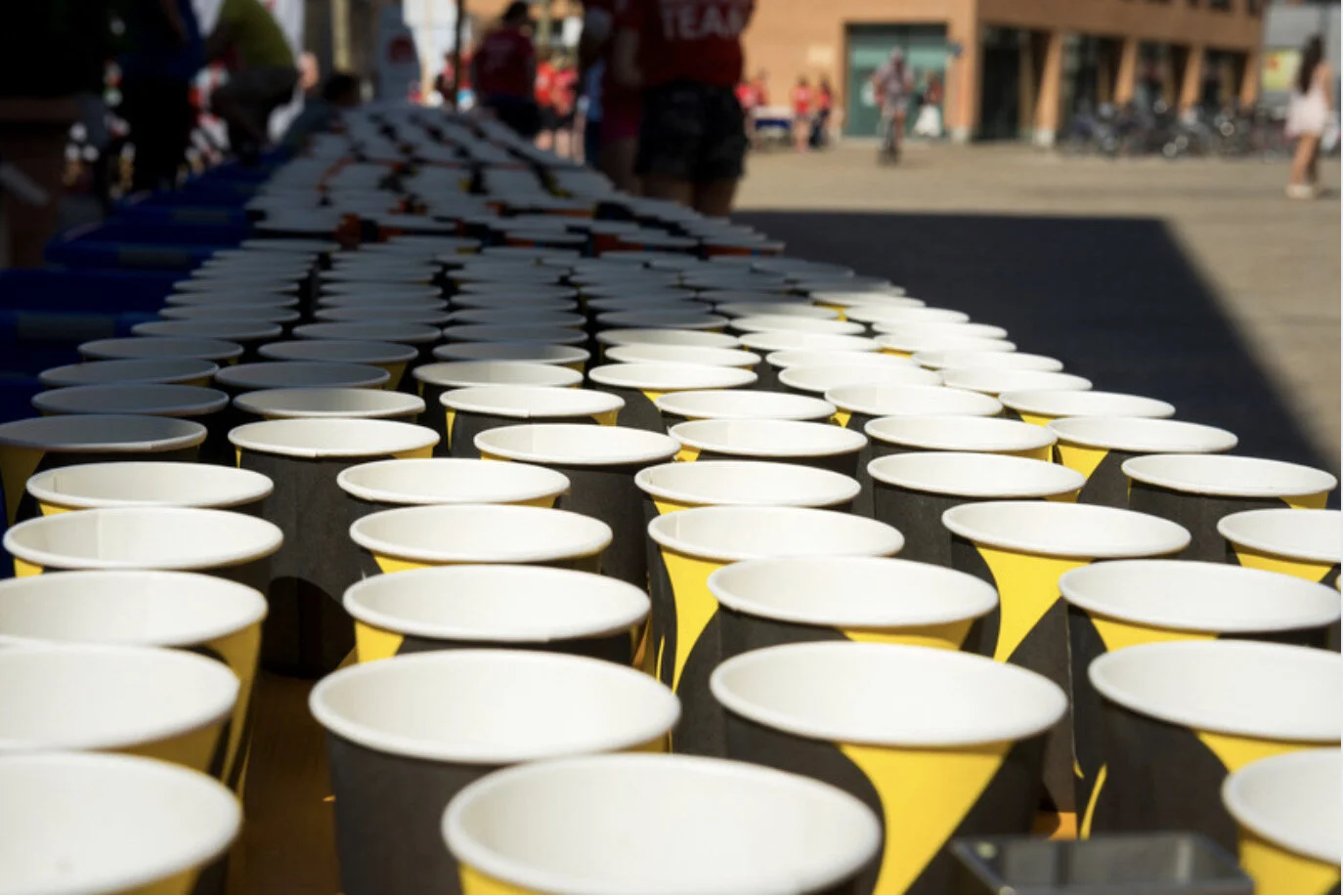Triathlon Nutrition Plan — Campfire Endurance Coaching
Your guide to fueling a sprint-distance race and beyond
What to eat? And When?
What Do You Eat in a Triathlon?
Your guide to triathlon nutrition for a sprint-distance race and beyond
What to eat? And When? These are eternal questions for ANY human being, but they are made more important if you are trying to swim, bike, and run yourself to a new PR or simply finishing your first event. If you’re following our training plan for your first sprint triathlon (or ANY first race), you’ve probably wondered what you should eat during workouts and in the upcoming competition. Nutrition for endurance sports might seem complicated at first, since everyone has an opinion and a story about how a faulty fueling plan ruined a race, but we’re here to allay your fears. Eating for training and racing needn’t be complicated, daunting, or difficult. You simply need to make some choices, try them out, and keep what works. For an Olympic distance triathlon, it's crucial to have a well-tested fueling plan to meet the specific nutritional needs of the race. Read on for a five-step process to identify your best fueling strategy.
Keep it simple
Spend any amount of time reading triathlon forums (stop doing that), and you’ll see accounts of rolling science experiments, with carbohydrate dosages meted out in hair-splitting quantities. Athletes such as these cannot be taught, and many don’t seem to want to. They enjoy the exacting nature of their fueling, which is fine, but the problem is that it won’t take much to ruin their plan on race day. If you absolutely have to eat 28.7g of carbohydrate, 555mg of sodium, and a piece of obscure Chinese ginger every 30 minutes, you’re setting yourself up for a disaster when you spill your salt or a bird makes off with the ginger during your swim. During an endurance event, you need carbohydrates, water, and salt (either dissolved in that water or in your food). Maintaining energy levels is crucial for optimal performance during training and racing. Start with those three ingredients, first.
Experiment with quantities
There are limits to how much carbohydrate, water, and salt your body can accommodate and use, and everybody is different. You’ve got all of these workouts to accomplish, though, so use them to figure out what you can handle. Most coaches and athletes measure their food intake in grams of carbohydrate per hour (CHO/hr), and their fluid intake in ounces or milliliters per hour (oz./hr or ml/hr). You can find out how many grams any given product contains by reading the nutritional label. The upper limit is probably around 90g of CHO/hr for food, while fluid absorption varies wildly. A good place to start? Try 60-80g of CHO/hr on the bike and 40-60g of CHO/hr while running. For fluid, begin at 1-1.5 bottles per hour (24-36 oz., or 700-1050 ml) and see how you do, adding more if you don’t run into issues.
Experimenting with nutrition during triathlon training is crucial to find what works best for each athlete.
What are you looking for? Well, if you’re not getting enough fluid, you may experience headaches, fatigue, high heart rate (pulse), and irritability/lack of focus. If you’re low on calories, you may experience…headaches, fatigue, irritability/lack of focus, and lower heart rates than normal. So symptoms are similar, which may seem annoying at first, until you realize the probable answer: eat AND drink something if you’re experiencing any of those symptoms, but make sure to read our note about hyponatremia, below. If you’re getting too much food, you’ll experience some gastrointestinal distress, but remember that being dehydrated, too, will contribute to GI woes!
What Formats?
There are almost as many brands of nutrition as there are races, but most of them sell the same big three ingredients: carbohydrates, salt, and fluid. Our advice? Try as many as possible, starting with the guidelines above, and tweaking the amounts as your system suggests your needs. Most sport bars carry 40-50g of carbohydrate per serving, most gels contain about 25g of CHO, chews are often 5-9g per chew, and any sports drink literally worth its salt will contain 500-800mg of sodium per mixed bottle. Some sodium/electrolyte products only have salt and no calories, which we’re OK with, but make sure you’re getting enough sustenance from the bars, gels, and chews going down your gullet. Many athletes experiment with non-sports nutrition as well, eating sweet potatoes, PB&J sandwiches, homemade honey balls, or stacks of Pringles. All of these are fine solutions, providing a nice break from the homogeneity of sports nutrition, but double-read our next section.
Additionally, a balanced triathlete's diet that includes a variety of nutrient-dense foods is essential for optimal performance and recovery.
Practice in every session
Yes, that’s right: every session. Once you’ve started experimenting, don’t ever miss a session without practicing and refining your approach. You want your racing and training nutrition plan to be second nature, and for your body to recognize and easily accept what you’re feeding it. Your gut adaptable, and the more you train it, the better it can handle different scenarios. What doesn’t work, though, is skipping fueling during your sessions to try and lose weight. If you follow that manner of thinking, your system will learn to slow down as you train as your system tries to spare calories. Then, on race day, when you attempt to feed it what it needs, it will reject the nutrition the way a grumpy toddler rejects peas.
For recreational athletes, it is crucial to have tailored recovery meals to avoid overeating post-workout and to maintain energy levels during a race.
A simple starting plan
Follow the table below for a very simple starting plan for your training and racing nutrition, and then read our series of caveats below that. You won't be able to fuel during the swim portion of your race, but in training we still recommend finishing a bottle during your workouts. Remember that it only requires a 2% drop in body weight due to dehydration for you to experience a dramatic drop in performance, so don't let that happen to you.
| Every hour on bike | Quantitative | Qualitative |
|---|---|---|
| Carbohydrates | 50-90g/hr | .5-1 bar, 1 package chews, 1 gel |
| Fluid | 24-48 oz fluid with 500-1500mg sodium | 1-2 bottles of fluid, each with at least 500mg of sodium |
| Every hour on run | ||
| Carbohydrates | 30-60g/hr | 1-2 gels or 1/2 to 1 package of chews |
| Fluid | 24-35 oz of fluid with 500-1500mg of sodium | 1 cup of sports drink with sodium at each aid station |
Other considerations
Yeah, we said five things, and those are above. If you’re interested, here are some more pointers about effective endurance nutrition.
For an Olympic distance triathlon, specific nutritional strategies are crucial. Tailored nutrition before, during, and after the race can significantly impact performance and recovery.
Hyponatremia
First of all, a note about hyponatremia. If you ONLY drink water, drink tons of it, and take in no salt, you are in danger of hyponatremia, which happens when the sodium concentration in your body drops to dangerous levels. The symptoms are similar to dehydration, which is a problem, since athletes feel dehydrated and keep drinking water. Hyponatremia can be fatal, but it is very avoidable. Make sure your bottles always contain sodium of some sort.
Salt and Carbohydrates Assist Absorption and Replenish Glycogen Stores
Drinks with salt and calories help your body absorb the water in your sports drink, so make sure to include both in your bottles. Very often athletes try to cut calories in training, and that only leads to poor racing and training outcomes. When your stomach recognizes sodium and carbohydrates in your drink mix, the fluid doesn't pass into the kidneys as quickly (where it is slated for, um, elimination), allowing your system to extract more water for your working engine.
Women May Do Better with Chews than Gels in a Triathlete's Diet
Dr. Stacy Sims, in her excellent book Roar, asserts that many women have more luck with sport chews than traditional gels. Chews are great because they are semi-solid, so they digest quickly, but they're easy to manage, and many of them taste better than gels (we think). Some great options are the PowerBar PowerGel Shots (we know: confusing name), the Skratch Labs Sport Energy Chews, and the Clif Bloks Energy Chews.
Women Are Not Small Men
To steal another piece of information from Dr. Sims, “Women are not small men.” The traditional approach to performance nutrition for women is the age-old “shrink it and pink it.” That approach drastically underserves women in sport, and should be avoided. A woman's menstrual and hormonal cycle changes the way her body deals with fuel, and each athlete should experiment for herself what works best, following step number two, above.
Single-Sport Athlete?
Just a cyclist or runner? Simply follow the guidelines for each sport above as your starting point and see how it goes.
In Conclusion
The biggest takeaway is that whatever you decide to try, practice it with the same assiduousness you practice your sport. Too many athletes train hard, but then ruin their races because they haven't practiced effective eating and drinking. Think of every training session as an opportunity to train your body to eat and drink, and you will arrive at race day an efficient machine, properly set up to accept the fluid and calories you need to succeed.
Understanding a Triathlete’s Diet
Importance of Body Weight for Endurance Athletes
As an endurance athlete, maintaining a healthy body weight is crucial for optimal performance. Excess body weight can lead to decreased endurance, increased risk of injury, and reduced overall performance. On the other hand, being underweight can result in inadequate energy stores, decreased immune function, and poor recovery. A triathlete’s diet should focus on achieving and maintaining a healthy body weight, which is typically between 18.5 and 24.9 BMI.
A healthy body weight is essential for endurance athletes because it allows for efficient energy production, reduces the risk of injury, and enhances overall performance. When a triathlete is at a healthy body weight, they can maintain a consistent pace, recover faster, and perform at their best. Additionally, a healthy body weight reduces the risk of chronic diseases, such as heart disease, diabetes, and certain types of cancer.
To achieve and maintain a healthy body weight, triathletes should focus on a balanced diet that includes a variety of whole, nutrient-dense foods. This includes lean proteins, complex carbohydrates, and healthy fats. A triathlete’s diet should also be tailored to their individual needs, taking into account their training schedule, distance, and intensity.
Daily Triathlon Diet
Balancing Macronutrients
A triathlete’s diet should be balanced and include the right mix of macronutrients to support optimal performance. The three main macronutrients are carbohydrates, protein, and fat, and each plays a critical role in energy production, recovery, and overall health.
Carbohydrates are the primary source of energy for endurance athletes and should make up 55-65% of a triathlete’s daily diet. Focus on complex carbohydrates, such as whole grains, fruits, and vegetables, which provide sustained energy and fiber. Examples of complex carbohydrates include brown rice, quinoa, sweet potatoes, and whole-grain bread.
Protein is essential for muscle repair and recovery and should make up 15-20% of a triathlete’s daily diet. Focus on lean protein sources, such as lean meats, fish, eggs, dairy, and plant-based options like beans and lentils. Examples of lean protein sources include chicken breast, turkey breast, salmon, and Greek yogurt.
Fat is essential for energy production and should make up 20-25% of a triathlete’s daily diet. Focus on healthy fats, such as nuts, seeds, avocados, and olive oil. Examples of healthy fats include almonds, walnuts, chia seeds, and avocado oil.
Meal Planning and Timing
Meal planning and timing are critical components of a triathlete’s diet. A triathlete’s diet should be tailored to their individual needs, taking into account their training schedule, distance, and intensity. Here are some general guidelines for meal planning and timing:
Eat a balanced meal with complex carbohydrates, lean protein, and healthy fats 1-3 hours before training.
Snack on easily digestible carbohydrates and protein 30-60 minutes before training.
Consume a mix of carbohydrates and electrolytes during long training sessions.
Refuel with carbohydrates and protein within 30-60 minutes after training.
Eat a balanced meal with complex carbohydrates, lean protein, and healthy fats 1-2 hours after training.
By following these guidelines, triathletes can ensure they are fueling their bodies for optimal performance, recovery, and overall health




